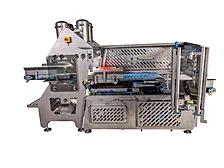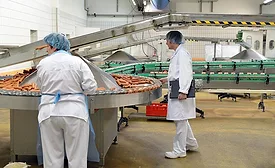Home » Keywords: » food quality
Items Tagged with 'food quality'
ARTICLES
Raising temperatures to save energy makes sense, but not at the expense of endangering food safety.
Read More
Risk-based Sanitation
Develop a Risk-based Approach to Sanitation
Having a plan and taking action on a continual basis helps keep uninvited squatter bacteria out of your facility.
May 16, 2024
Analytical Instrumentation: How Low Can You Go?
Today’s analytical instrumentation is answering the call to finding extremely low levels of unwanted chemical contaminants in food.
September 1, 2022
Field Report
Filtration for extra virgin olive oil ensures its purity
Spanish EVOO producer uses cellulose filter sheets to ensure its early-harvested oil is free from impurities
December 16, 2021
Food inspection machine increases foreign object detection rates up to 500%
ProSpection Solutions uses EtherCAT and PC-based control technology from Beckhoff to optimize low-density foreign material inspection system
July 8, 2021
Pet Food
Pet food: Safety and quality count
While pet food production continues to flourish during the pandemic, processors take quality and safety seriously
December 3, 2020
Tech Update
Controlling temperature from farm to fork protects product quality, brand name
July 16, 2020
Elevate your expertise in food engineering with unparalleled insights and connections.
Get the latest industry updates tailored your way.
JOIN TODAY!Copyright ©2025. All Rights Reserved BNP Media.
Design, CMS, Hosting & Web Development :: ePublishing











